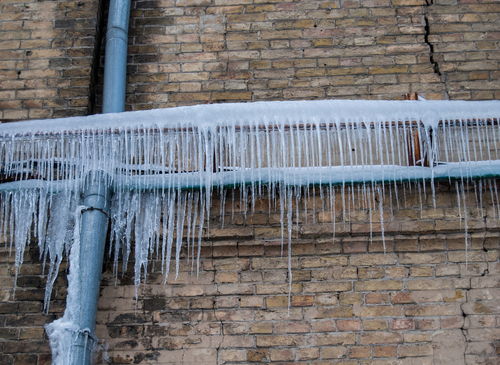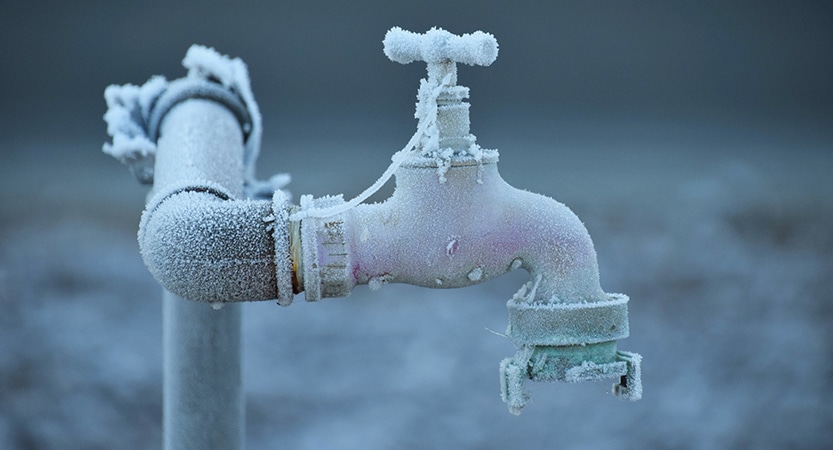Crucial Advice to Prevent Frozen Plumbing in Winter: Specialist Guidance
Crucial Advice to Prevent Frozen Plumbing in Winter: Specialist Guidance
Blog Article
Just how do you really feel in relation to Helpful Tips to Prevent Frozen Pipes this Winter?

Cold weather can ruin your plumbing, specifically by freezing pipelines. Right here's how to prevent it from taking place and what to do if it does.
Intro
As temperature levels decrease, the danger of icy pipelines rises, possibly bring about expensive repairs and water damages. Comprehending just how to stop icy pipes is crucial for home owners in chilly environments.
Prevention Tips
Shielding prone pipes
Cover pipes in insulation sleeves or utilize warmth tape to safeguard them from freezing temperature levels. Focus on pipes in unheated or external areas of the home.
Heating strategies
Maintain interior areas adequately heated up, particularly locations with pipes. Open cabinet doors to enable cozy air to flow around pipelines under sinks.
Just how to identify frozen pipes
Search for reduced water flow from faucets, uncommon smells or noises from pipes, and visible frost on subjected pipelines.
Long-Term Solutions
Structural modifications
Think about rerouting pipes away from outside wall surfaces or unheated areas. Add extra insulation to attics, cellars, and crawl spaces.
Upgrading insulation
Buy top quality insulation for pipes, attics, and walls. Correct insulation helps preserve constant temperature levels and decreases the risk of icy pipes.
Securing Exterior Pipes
Yard hoses and outdoor faucets
Separate and drain pipes yard tubes before wintertime. Set up frost-proof spigots or cover outdoor taps with protected caps.
Understanding Icy Pipelines
What triggers pipelines to freeze?
Pipelines freeze when exposed to temperature levels below 32 ° F (0 ° C) for expanded periods. As water inside the pipelines ices up, it increases, putting pressure on the pipe wall surfaces and potentially creating them to burst.
Dangers and problems
Frozen pipes can cause water interruptions, building damages, and costly repairs. Ruptured pipelines can flood homes and trigger comprehensive architectural damages.
Signs of Frozen Water Lines
Recognizing icy pipelines early can prevent them from breaking.
What to Do If Your Pipes Freeze
Immediate actions to take
If you believe icy pipes, keep taps open up to soothe pressure as the ice thaws. Use a hairdryer or towels taken in hot water to thaw pipes gradually.
Conclusion
Avoiding frozen pipelines calls for aggressive procedures and fast feedbacks. By recognizing the reasons, indications, and safety nets, house owners can secure their plumbing during cold weather.
6 Proven Ways to Prevent Frozen Pipes and Protect Your Home
Disconnect and Drain Garden Hoses
Before winter arrives, start by disconnecting your garden hoses and draining any remaining water. Close the shut-off valves that supply outdoor hose bibs and leave the outdoor faucet open to allow any residual water to drain. For extra protection, consider using faucet covers throughout the colder months. It’s also important to drain water from any sprinkler supply lines following the manufacturer’s directions.
Insulate Exposed Pipes
Insulating your pipes is an effective way to prevent freezing. Pipe insulation is readily available at home improvement stores and is relatively inexpensive. Pay close attention to pipes in unheated areas such as the attic, basement, crawl spaces, or garage. Apply foam insulation generously to create a buffer against the cold. You can also wrap your pipes in heat tape or thermostat-controlled heat cables for added warmth.
Seal Air Leaks
Inspect your home for any cracks or openings that could let in cold air. Seal any holes around the piping in interior or exterior walls, as well as the sill plates where your home rests on its foundation. Additionally, make sure to keep your garage door closed unless you’re entering or exiting. Leaving it open creates a significant air leak that can lead to frozen pipes.
Allow Warm Air Circulation
During cold snaps, it’s essential to allow warm air to circulate evenly throughout your home. Leave interior doors ajar to promote better airflow. Open kitchen and bathroom cabinets to help distribute heat consistently around the rooms. If you have small children or pets, be sure to remove any household chemicals or potentially harmful cleaners from open cabinets for safety.
Let Faucets Drip
A small trickle of water can make a big difference in preventing ice formation inside your pipes. When temperatures drop significantly, start a drip of water from all faucets served by exposed pipes. This continuous flow helps prevent the water from freezing. Additionally, running a few faucets slightly can relieve pressure inside the pipes, reducing the chances of a rupture if the water inside does freeze.
https://choateshvac.com/6-proven-ways-to-prevent-frozen-pipes-and-protect-your-home/

As a fervent reader on 6 Ways to Prevent Frozen Pipes, I think sharing that short article was sensible. So long as you appreciated our blog post if you please make sure you remember to pass it around. I value reading our article about Preventing and dealing with frozen pipes.
Click Here Report this page